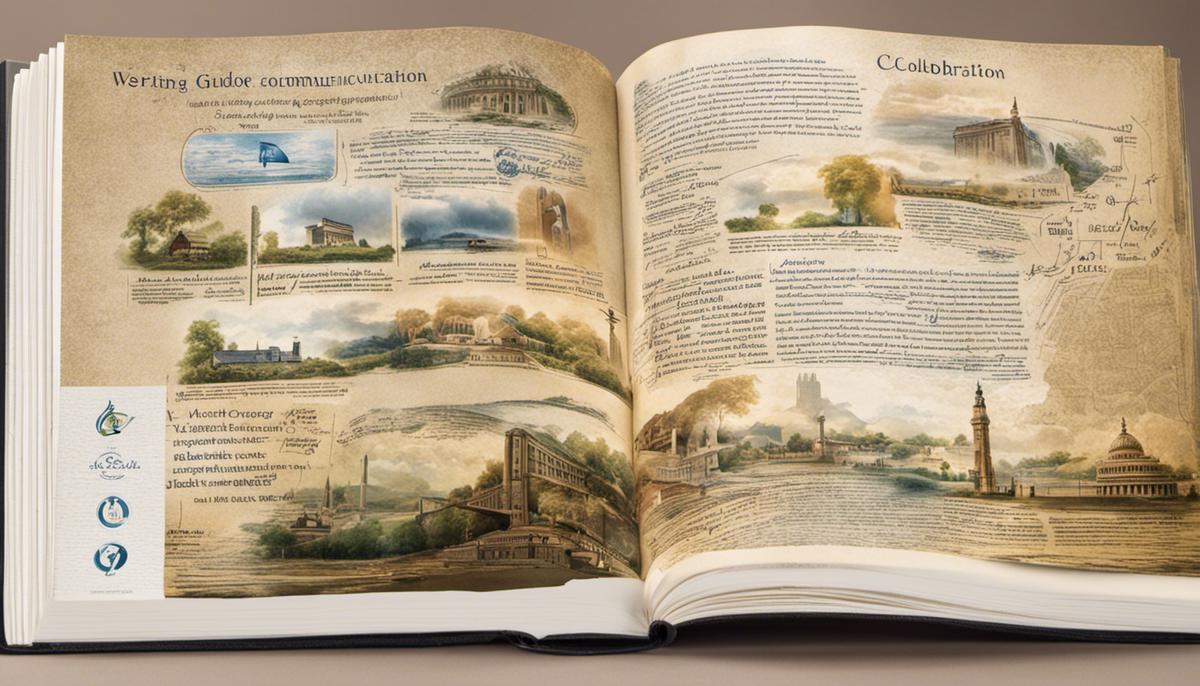Mastering the art of delegation can transform your content strategy and take your team’s productivity to incredible heights. It involves keenly dissecting the expertise of your content writers — from their writing speed to their creativity level, research abilities, and in-depth knowledge of the topic at hand. Beyond understanding each team member’s strengths and weaknesses, it’s essential to develop clear, concise, and effective communication skills to establish expectations and meet deadlines. Moreover, the digital age offers a plethora of task management software such as Asana, Trello, or Slack – tools that can streamline your task delegation and improve your team’s workflow.
Understanding the strengths and weaknesses of your content writers
Spotlighting the Proficiencies and Areas for Growth in Your Content Creation Team
Content is king. It’s a common phrase touted in the realms of digital marketing and is unequivocally true. High-quality content retains users, speaks to a target audience, and ultimately drives business outcomes. Yet, creating consistently resourceful and engaging content requires a creative, proficient team of content writers. Considerable sagacity must be employed in determining your team’s strengths and weaknesses, ushering forth necessary improvements. Here’s your necessary guide to unlocking that potential:
1. Evaluate Linguistic Prowess:
The first identifier is the language itself. Writing can be beautiful or laboriously complicated based on nuance, grammar, punctuation, and other linguistic considerations. Categories range from creative styles to factual reportage and technical refinement, set according to the needs of your project. High-quality content must be consistent with the writing style, voice, and tone befitting your brand identity.
2. Appraise Writing Versatility:
Investigate your team’s ability to adapt to different writing formats. Kickstarting with blogs, does their proficiency extend across articles, social media content, newsletters, case studies, white papers, or scriptwriting? The versatility in writing can increase your content production capacity in the long haul. Spot opportunities to diversify your content marketing strategy based on their strengths.
3. Assess Content Relevance:
Content amenities should align with the company’s strategic goals. The capability to write engaging content is one thing, but generating value and relevance for your target audience defines the true writer. Assess the relevance of generated content in driving customer engagement, brand recognition, and conversions.
4. Analyze Research Skills:
Compelling content is heavily grounded in research, tailored to the audience and the industry. Writers ought to be avid intellects, equipped with facts, trends, and rich insights about your business sector. Their capacity to delve into the topic and extract valuable information can differentiate mediocre from stellar content.
5. Monitor Improve SEO Understanding:
SEO remains the linchpin to creating discoverable content, and writers’ SEO comprehension significantly impacts online visibility. Appraise skills, such as keyword placement, backlinking, meta descriptions, and understandability of algorithms updates.
6. Review Timeliness and Commitment:
Respecting deadlines can make or break content delivery timelines. Determine if your team can manage workflow effectively, handling projects within the stipulated time frame.
7. Weigh up Feedback Reception:
Content writers should be open to constructive criticism, leveraging it to finetune their skills and create better content. Gauge writers’ receptiveness to feedback, and monitor changes made basis the same.
8. Consider Team Collaboration:
A cohesive content creation team fosters the sharing of creative ideas, constructive critiques, and smooth project execution. Determine how well your writers work in a team, as collaboration is often key to producing exceptional content.
Parting thought: effective evaluation of your content creation team bodes well for your content strategy. Acknowledge the strengths while providing resources and training to improve on the areas of weakness. Above all, remember that content creation is a fluid field, and constant dynamism, innovation, and learning will keep your team at the top of its game.

Effectively communicating task expectations and deadlines
From setting expectations to ensuring deadlines, fostering a healthy environment for your writers is a complex art that involves precision and tact. The key lies in understanding the multifaceted elements of this interaction and leveraging them effectively. Humans aren’t machines – each writer carries their unique perspectives, competencies, and styles that add unique value to your business. Thus, clear communication becomes the lifeblood of this collaboration, ensuring that they understand exactly what you need.
- Articulate Your Vision: Incorporate specific, measurable, achievable, relevant, and time-bound (SMART) objectives into briefs. Use these parameters to give direction and shape to the content, and to maintain consistency in the narrative.
- Adopt a Client-Centric Approach: Make your exact requirements known to the writers, including the target audience, the exact nature of the content, and the requisite tone and style. This not only helps streamline the writing process but also ensures that the end product resonates with your client and their target demographic.
- Introduce a Writing Guide or Style Guide: A comprehensive guide providing detailed instructions on language style, punctuation, font conventions, and graphical elements can dramatically enhance content quality. It also serves as a ready reference for any queries your writers may have.
- Implement Effective Project Management Tools: Utilize software such as Asana, Trello or Basecamp to facilitate clear communication of assignments, deadlines, and feedback in an organized manner. These tools also allow for real-time tracking, ensuring timely delivery and enhanced productivity.
- Encourage Open Dialogue: Transparent and open communication is the building block for a successful relationship between project managers and writers. Foster a culture where queries are encouraged and duly addressed, creating a more efficient, focused, and harmonious working environment.
- Be Clear About Deadlines – Time is of the essence in any business undertaking. While assigning tasks, do not mince words on the deadlines. State them clearly, and ensure that your team understands the timeline and works accordingly.
- Cultivate A Feedback-Rich Environment – Swift and constructive feedback ensures better understanding of the expected output and helps writers learn and grow. Regular feedback also builds trust in your relationship, encouraging your writers to deliver their best every time.
- Train Your Team – Promote regular workshops and training programs focusing on recent market trends, technology updates, and SEO strategies. Knowledge enrichment aids in producing content that is relevant, well-researched, and up-to-date.
Remember, the relationship between you and your writers is not a monologue but a dialogue. Clear, consistent, and effective communication holds the key to aligning your writers with your business objectives, paving the way for prolific outputs. By following these critical steps, you’ve established a strong foundation for success – not merely in terms of immediate profitability, but also the long-term growth and sustainability of your business.

Using digital tools for task management and delegation
on New Technology and Digital Tools
Digital tools, when employed effectively, can streamline the process of task management and delegation, proving beneficial, particularly in the entrepreneurial space.
One such indomitable tool is Asana. It allows you to easily map out all the tasks in a project, showing who’s doing what by when. By visualizing the project’s progress, managers can effortlessly delegate tasks, set deadlines and priorities, all while keeping everyone on the same page. Asana encourages transparency and collaboration in the team setting, increasing efficiency manifold.
In scenarios that require quick updates and immediate exchange of ideas, tools like Slack step in. Slack is a real-time messaging app that organizes conversations into channels, making collaboration easy and effective. Integrating Slack with other digital tools can boost efficiency and increase agility in responding to business requirements.
Shared documents and cloud storage are revolutionizing how teams work and manage tasks. Google Workspace is a high-powered suite that includes Docs, Sheets, Slides, and Drive, allowing team members to share and edit files in real-time. This not only fosters collaboration but also eliminates the chances of working on obsolete versions of documents, enhancing accuracy in task completion.
When it comes to tracking tasks, Trello can be game-changing. It’s easy-to-use, visually appealing, and offers a clear understanding of task progression. By organizing tasks into boards, lists, and cards, Trello provides a holistic view of the project, ensuring everyone knows what to do, what’s next, and what’s been done.
GanttPRO is another powerful digital project management tool. Employing Gantt charts, this tool helps visualize tasks and timelines, making it apparent who is responsible for what task, and when it is due. This real-time and visual oversight leads to more accurate forecasts and improved task delegation.
For nurturing a constructive feedback culture, digital tools like 15Five are paramount. This performance management software helps managers check-in with their employees and collect valuable feedback about tasks, projects, and the overall working environment. This ongoing dialogue gives team members a voice, fostering trust and improving morale.
In conclusion, the adroit use of digital tools not only helps manage and delegate tasks effectively but also creates an environment that fosters teamwork, transparency, and high productivity. The ultimate goal should always be to equip the team with the most applicable and efficient tools to get the job done. Embrace digital transformation and become the catalyst for your team’s success.

Refining your delegation skills and learning how to utilize digital tools effectively can significantly enhance your team’s performance and the quality of the content produced. By knowing your content writers’ skills, competently communicating task expectations, and leveraging technology for task management, you are taking steps towards making your team more efficient, productive, and closer to achieving your content goals. Remember, successful delegation doesn’t just help get work done – it empowers your writers, improves team cohesion, and ultimately leads to the creation of superior content that resonates with your audience.






